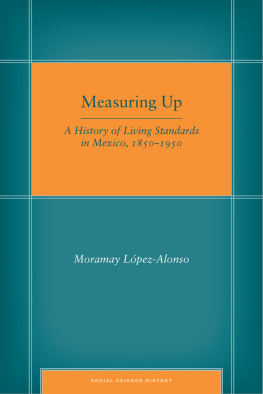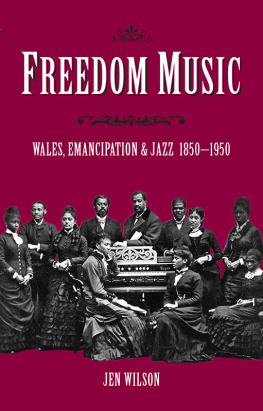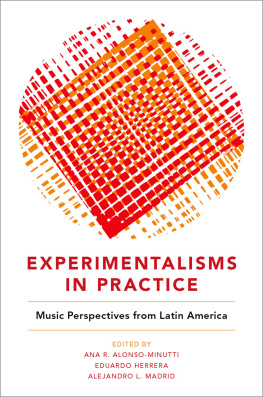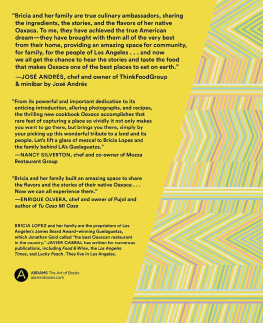Stanford University Press
Stanford, California
2012 by the Board of Trustees of the Leland Stanford Junior University. All rights reserved.
This book has been published with the assistance of the Dean of Humanities at Rice University.
No part of this book may be reproduced or transmitted in any form or by any means, electronic or mechanical, including photocopying and recording, or in any information storage or retrieval system without the prior written permission of Stanford University Press.
Printed in the United States of America on acid-free, archival-quality paper
Library of Congress Cataloging-in-Publication Data
Lpez-Alonso, Moramay, author.
Measuring up : a history of living standards in Mexico, 1850-1950 / Moramay Lpez-Alonso.
pages cm.(Social science history)
Includes bibliographical references and index.
ISBN 978-0-8047-7316-4 (cloth : alk. paper)
ISBN 978-0-8047-8285-2 (e-book)
1. Cost and standard of livingMexicoHistory. 2. StatureMexicoHistory. 3. DietMexicoHistory. 4. Public healthMexicoHistory. 5. Public welfareMexicoHistory. 6. PovertyMexicoHistory. I. Title. II. Series: Social science history.
HD6996.L658 2012
339.47097209034dc23
2012010625
Typeset by Newgen in 10.5/13 Bembo
A CKNOWLEDGMENTS
Research for this study was done in two stages. The first was completed at the Department of History at Stanford University and was supported handsomely by the Consejo Nacional de Ciencia y Tecnologa and the Centro de Investigacin y Docencia Econmica in Mexico, a Graduate Research Opportunity Grant at Stanford University, and a Mellon Foundation Summer Research Grant. I conducted the second stage of my research while I was head of the Direccin de Estudios Financieros Internacionales at the Secretara de Hacienda y Crdito Pblico in Mexico.
Research in Mexico was carried out at the Direccin General de Archivo e Historia at Secretara de la Defensa Nacional, the Direccin General de Delegaciones at Secretara de Relaciones Exteriores, the Archivo General de la Nacin, the Biblioteca del Instituto Nacional de Antropologa e Historia, and the Hemeroteca Nacional. I would like to express my appreciation to the directors and staff of all these institutions for their efficiency, expertise, and patience, especially at those archives that were not open to the public. I would also like to thank my wonderful research team at the Hacienda. Ral Porras Condey, Manuel del Monte, Rogelio Sandoval, and Emmanuel Vargas, with the assistance of a number of servicio social students, enthusiastically combined research in the public finances with data gathering and the construction of height databases, for which they had to learn more anthropometric history than they ever anticipated. Without their help I would not have been able to complete the second stage of archival research. A word of thanks goes to Jean Niswonger at Rice Universitys GIS Data Center, who helped me prepare the maps.
The initial writing of this book was done at the Center for U.S.Mexican Studies at the University of California, San Diego, where I was a visiting research fellow in 20042005. A Richard Gilder Fellowship at the Humanities Research Center at Rice University in 20072009 enabled me to develop my arguments. I would like to thank the Department of History at Rice University for granting me leave to make final revisions to the manuscript.
Stephen H. Haber made this work possible in all sorts of ways. I thank him for his unwavering support and for encouraging me to delve into a topic barely studied in the economic history of Mexico. To him I owe an immense debt of gratitude. Herbert Klein helped open doors in the field of anthropometric history. Richard Steckel and John Komlos have given me the benefit of their time and expertise since my days as a graduate student; they welcomed me to the anthropometric history group. Without their counsel, analyzing height data would have been a daunting task. Catherine Mansell Mayo has been a source of courage, inspiration, and strength throughout.
I appreciate the comments on the living standards/anthropometric history portions of this study provided by Joerg Baten, Antonio D. Cmara Hueso, Amlcar Chall, Tim Cuff, Zephyr Frank, Jorge Gelman, Kris Inwood, Lyman Johnson, Jos Miguel Martnez-Carrin, Adolfo Meisel, Alexander Moradi, Ricardo Salvatore, Daniel Santilli, Marco Sunder, and Virginia Vitzthum. Carl Caldwell read and provided extremely useful comments on two versions of .
John H. Coatsworth, Eric Van Young, the late Paul Vanderwood, and John Womack Jr. provided sage advice on Latin American and economic history. A special word of thanks goes to Richard Salvucci, who read the entire manuscript with care and penetrating insight and whose own work on Mexican economic history serves as an example to all scholars.
In Mexico several researchers shared their time and expertise. Lourdes Mrquez Morfin gave me direction on how to undertake interdisciplinary research combining physical anthropology and history. Doctor Francisco Gmez Prez from Instituto Nacional de Nutricin was generous with his time and in sharing documents with me that do not circulate frequently outside of the medical community. Conversations with him gave me a better understanding of the synergies between health and nutrition in the Mexican population. With his assistance I was also able to bring together the knowledge I had acquired on human biology and archival information about health with the current health status of the Mexican population. Hugo Lpez Gatell and Arantxa Colchero were kind to spend time talking to me about the relationship between nutrition and pathologies of the Mexican population and how they relate to public health problems in contemporary Mexico. Through our dialogue I was able to shape my argument on the link between public health policies and the needs of the population. Laura Chzaro Garca shared her work and gave me time, both of which were valuable in helping me construct the argument on the history of science and medicine in Mexico. Luisa Gabayet, the late Carmen Castaeda, Sandra Kuntz, Graciela Mrquez, Aurora Gmez-Galvarriato, Luis Juregui, and Antonio Ibarra gave me the opportunity to present my work in different academic fora. The comments and reactions of the audiences were crucial in the writing process.
Many colleagues discussed the ideas in this study with me. My conversations with Edward Beatty, Yovanna Pineda, William Surez-Potts, William Summerhill, and Mauricio Tenorio-Trillo were especially valuable; I treasure their friendship and support.
Many colleagues and friends at Rice University have contributed in different ways to the preparation of this book. In particular, the help and support of Carl Caldwell, Caroline Levander, Aysha Pollnitz, Allison Snider, Kerry Ward, and Lora Wildenthal have been and are much valued and appreciated.
Anthony G. Lozano read, revised, and critiqued the entire manuscript twice and revised my translations. With endless patience, my uncle Tony has been helping me overcome the Hispanic baroque tendencies in my use of the English language.







